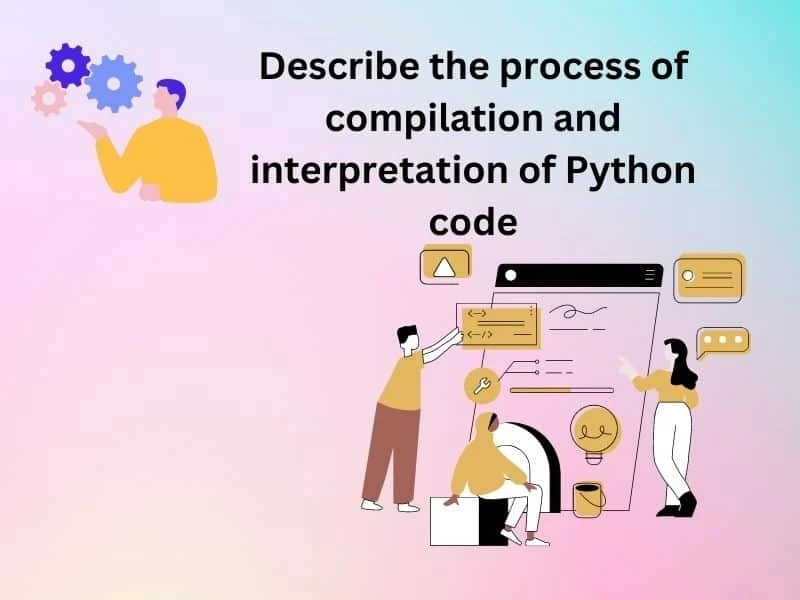Knowing the process of compilation and interpretation of Python code is essential for any Python developer, as it\'s integral to understanding and writing code in this popular programming language. To help you prepare for potential interviews on the topic, here are the 23 top Python interview questions and answers about compilation and interpretation.
First, let’s review what compilation and interpretation are. Compilation is the process of translating source code into machine code that can be executed by a computer. On the other hand, interpretation is when an interpreter directly executes a program without requiring a separate compilation step. Python is considered an interpreted language since it does not need to be compiled before it can be executed — instead, it runs immediately after the code is written.
While Python does not require a compiler to run its code, there are specialized compilers available that make writing certain types of programs easier. One such example is Cython, which optimized C or C++like program within a Python environment. This makes it possible to take advantage of both languages while maintaining the readability and ease-of-use associated with Python programming.
In terms of actual usage, many developers prefer interpreted languages like Python because they can make changes quickly and easily without having to go through numerous compilation steps. For more complex tasks where speed or portability are important factors, however, compiled languages may be preferable. Ultimately, each project needs to be assessed on an individual basis before deciding which approach will work best for your particular application.
Data Science
Explain how memory management works in python
Have you ever wondered how memory management works in Python? Memory management is an important part of any programming language, and understanding it is essential for any developer. In this blog, we\'ll dive into the basics of memory management in Python so that you can feel confident tackling interview questions about this topic.
First, let\'s discuss memory allocation. This is the process of assigning a block of memory to store data or instructions. In Python, memory is allocated for blocks that include objects, variables and arrays. Next, we\'ll talk about free memory management. This is the process of releasing memory after it has been used by a program or process. Free memory management ensures that there is enough available space for your program to continue running efficiently.
Now let\'s move on to object lifetime. Object lifetime refers to the period of time during which an object exists within the system’s physical memory. Garbage Collection plays a role in managing object lifetime in Python by removing objects which are no longer needed from memory. Reference counting also helps manage object lifetimes by counting how many times a specific object has been referenced throughout the program\'s execution time and freeing up that reference once it’s no longer used or needed.
Another key aspect of Python\'s memory management system involves the interpreter\'s data structures, such as stacks and heaps. Stacks are data structures used to store instructions while heaps are used to store objects and variables in order to free up space on the stack when they are not needed anymore. Finally, we should also mention Automatic Memory Management (AMM) and its counterpart Manual Memory Management (MMM).
What libraries and frameworks are used in Python?
Python is one of the most popular programming languages and is used extensively in various applications. As such, understanding which libraries and frameworks to use in Python are essential skills for developers. In this blog section, we\'ll dive into some of the top libraries and frameworks used in Python.
Python libraries are a key part of the development process. They are reusable pieces of code that help speed up the process by providing code solutions for functions or short snippets instead of having to write them from scratch. The majority of Python libraries are open source, meaning they are free to use or modify under certain conditions depending on the library\'s license.
One of the most popular Python frameworks is NumPy (Numerical Python). This library provides powerful tools for scientific computations and has many useful features such as linear algebra, Fourier transforms, and random number generation. Another popular library is SciPy (Scientific Python), which contains modules for optimization, integration, interpolation, linear algebra and other tasks. Additionally, Scikit Learn is another popular framework offering easy-to-use machine learning algorithms with pre-processing capabilities.
Data Analytics Courses in Mumbai
Pandas is another widely used library that provides data structures and data analysis tools for python. It helps in organizing, manipulating and analyzing data to get meaningful insights from it. Matplotlib is a 2D plotting library used to create figures and plots using numerical data sets. Finally, Flask is a web microframework that provides users with a rapid development platform allowing them to quickly create web applications.



